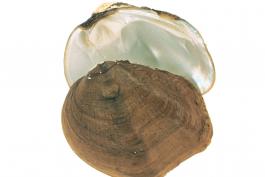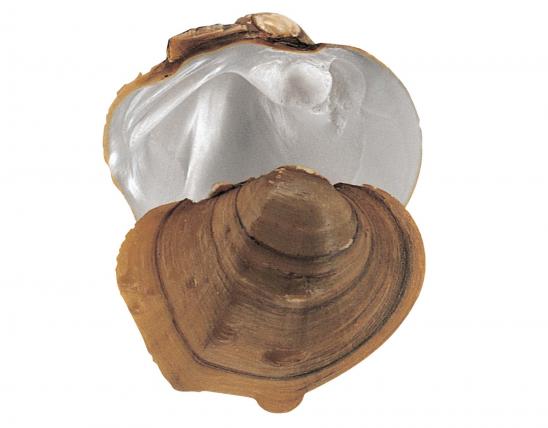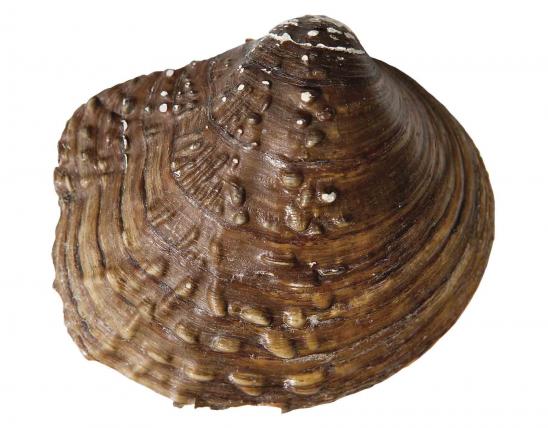
Among all the mussels of Missouri, this is perhaps the easiest to recognize: As the shell grows, large knobs are produced, first on one shell and then on the other, in an alternating pattern.
Small, moderately thick and rounded shell with 3 to 4 large knobs or horns on each valve (shell half), alternating with those on the opposite valve; distinct depressions above each knob. Umbo is raised above hinge line. Epidermis is light tan to green, darker with age; often with fine green rays. Inside shell beak cavity is shallow to moderately deep; pseudocardinal teeth heavy, serrate and well developed; lateral teeth grooved, relatively long and straight to slightly curved; nacre (lining) white.
Similar species: Pimpleback and wartyback are similar, but neither has the fine green rays of the threehorn wartyback, nor such large, distinct knobs with associated depressions.
Adult length: 2-3 inches.

Most common in north-flowing streams south of the Missouri River and in the lower St. Francis River; also in southeastern Missouri, Salt River and Mississippi River.
Habitat and Conservation
Larger streams and rivers with moderate current in gravel, gravel-sand and gravel-mud; also in reservoirs.
Food
Algae and fine particles of decaying organic matter; extracts nutrients and oxygen from water drawn into the body cavity through a specialized gill called the incurrent siphon; sediment and undigested waste are expelled through the excurrent siphon.
Status
Fairly common, although degrading water quality and watershed destabilization interfere with the survival of this and all freshwater mussels.
Life Cycle
Males release sperm directly into water. Females downstream siphon sperm into the gill chamber, where eggs are fertilized. Eggs mature into larvae (called glochidia), which discharge into the water and attach to host fish. The tiny mussel eventually breaks away and floats to the bottom of the stream, and the cycle repeats.
Human Connections
Mussels are excellent biological indicators of water quality because they are long-lived and relatively immobile, accumulating contaminants in water that can be scientifically analyzed. This species may be of use in the shell-chip industry.
Ecosystem Connections
Mussels act as nature's “vacuum cleaners,” filtering and cleansing polluted waters. They are also an important food source for other species in the aquatic environment.


























